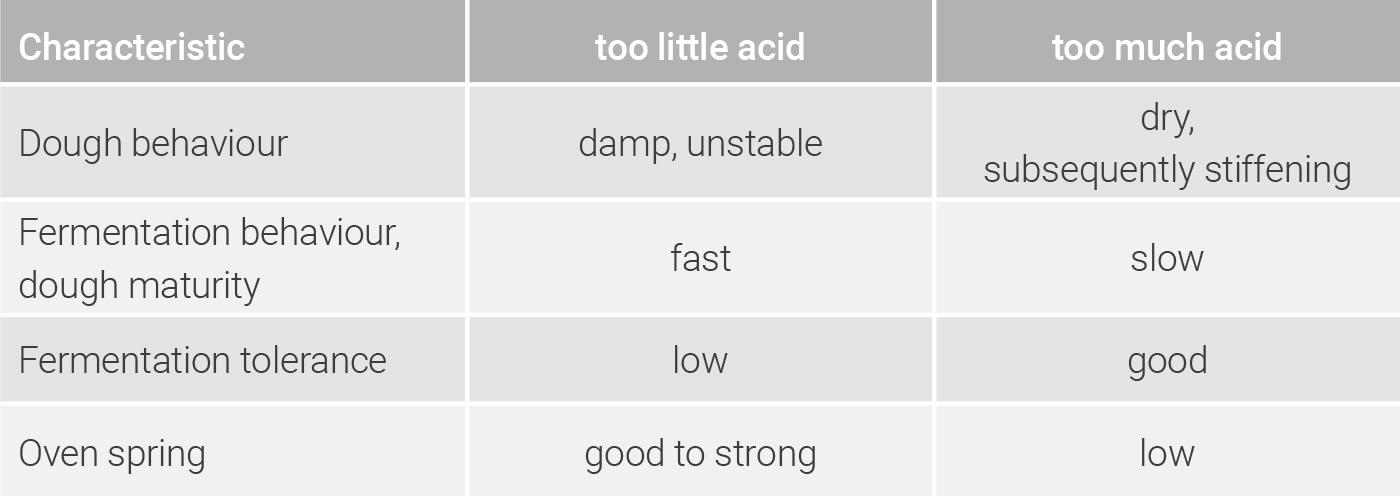The majority of problems, which can occur in connection with the processing of sourdoughs, can be traced back to two causes. Either a too young or a too old sourdough was processed.
As a result of too short maturing times or a too cold method, young sourdoughs have developed too little acid, so that the degree of acidity lies below the value expected. If this too young sourdough is now used together with the normal percentage of sourdough, then too little acid enters the dough. In the case of high enzyme activity of the rye flour used, this can lead to an inelastic, sticky crumb. In the case of very high enzyme activity (sprouting), the formation of blisters and hollows can occur.
As a result of too long standing times or too warm processing, old sourdoughs develop too much acid, so that the degree of acidity is too high. As the percentage of sourdough is based on the normal degree of acidity, then too much acid enters the bread dough from the old sourdough during processing, whereby an over-acidification takes place. This is often seen by a slow proof, a strongly sour aroma and a very compact, tight crumb.
Is a deviation in the degree of acidity ascertained in the sourdough before processing as a result of routine quality checks, then the percentage of sourdough used normally has to be adjusted to the changed degree of acidity of the sourdough. When processing a too young sourdough, the percentage of sourdough has to be increased and reduced in connection with a too mature sourdough. To balance fluctuations in the percentage of acid, a combined method is often worked with in practice. In this way, the percentage of a company’s own sourdough can remain the same and the quantity of acid introduced set exactly with the help of dried sourdough and/or dough acidifying agent.
When foreign fermentations occur, which are expressed by an unpleasant smell which is not typical for sourdough, the sourdough has to be disposed of and containers and pipes cleaned thoroughly before a new start is made with a pure culture sour.


